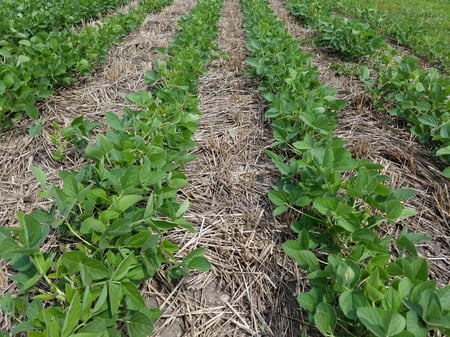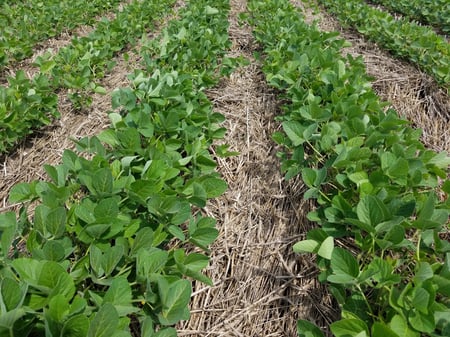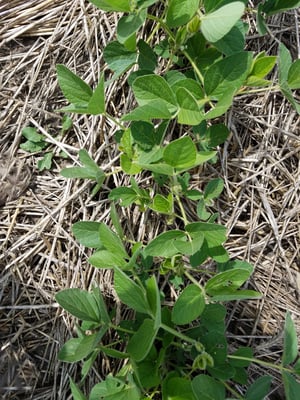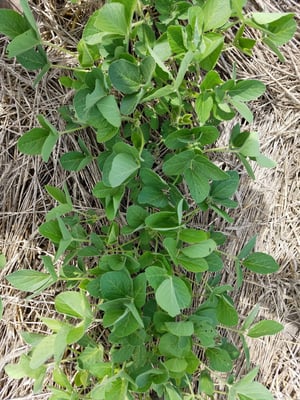The SoilWarrior and Soybeans
Environmental Tillage Systems (ETS) and its customers are driven to defend the land and lead the charge. It is not surprising that they are finding ways to make the SoilWarrior system more versatile. After all, the business was built around unconventional thinking.
SoilWarrior owners have had success for many years planting soybeans with their SoilWarrior units, not only creating the strip but actually planting the seed directly from the tanks on the SoilWarrior. Not only can the SoilWarrior hold a very large number of soybeans thereby reducing your need to stop and tender it, you can also plant at 7-10 mph in most conditions to cover a significant number of acres very quickly. In these photos you can see the difference in canopy development/inter-row shading with the SoilWarrior planted soybeans due to the increased width of the seed placement zone as well as the freedom to bush out instead of etiolate/grow upward due to decreased plant-to-plant competition with the SoilWarrrior soybeans.
 Singulated Row Planted
Singulated Row Planted SoilWarrior Planted
SoilWarrior Planted
Most soybeans are planted between 120,000 and 160,000 seeds/acre; remember to use your desired rate when making the calculations below.
This is how we (ETS) do it.
1) Find out your seeds/lb in soybean lot. (printed on the bag/tote tag)
2) Figure out your lbs need per acre (seeding rate divided by seeds per lb)
3) Find product density of the soybean seed just like with fertilizer (SB come out around 55 lb/bu in my experience)
4) Calibrate/set your monitor for density lbs/a
5) Remove sliders from inside meter to provide more room for soybeans to flow.
6) Be prepared to re-angle the fertilizer tube to put seed deeper or less deep after you evaluate the first 100 feet of planting
7) MAKE sure you have fan on at the normal RPM setting
8) Make sure baskets are down and straight bars are on if applicable
9) Run 100-200 feet in field at a very shallow tillage depth. You may need to tilt toolbar slightly back to get containment coulters to engage the ground enough to move enough dirt to cover seed well.
10) DIG behind the machine. It may help to place a spade/shovel in the zone “cutting it off” from the rest of the zone. Then move back 6 inches and insert another spade. Carefully remove the soil by hand that is in between – effectively a box of soil you are examining for depth of seed placement.
-
- Count whatever seed is too deep to come up and ever break the soil surface, count what is too shallow to germinate/establish well, add together.
- Count what is in the “good” zone – 1.5 to 2.0 inches deep usually.
- Calculate the percentage of good vs. bad placement – I typically have found it is less than 10% - these are the same as non-germ seeds that is calculated when the PLS is done on your seed lot.
- Increase your seeding rate per acre by the % that you determined would not be viable.
 Singulated Row Planted
Singulated Row Planted
SoilWarrior Planted
Depending upon soil moisture conditions, you may or may not want to roll a field for seed/soil contact and to flatten the field for ease of harvesting soybean pods on the lowest portion of the stem. If it is moist you may create a crust, if it is dry it would likely help a bunch. A culti-packer tool with the tines up works well but a field roller would work too – just be sure to evaluate your rolling results occasionally to make sure you aren’t increasing the possibility for crusting.
See how Dan Hanson uses his SoilWarrior to plant soybeans.

Comment